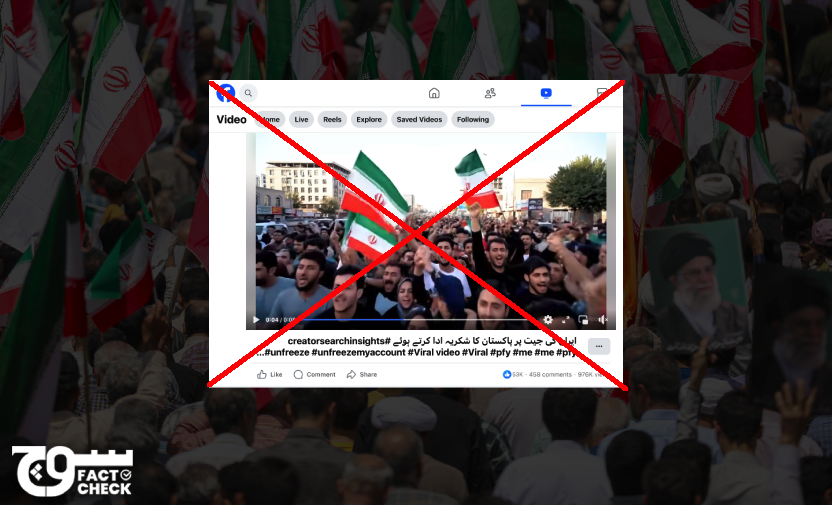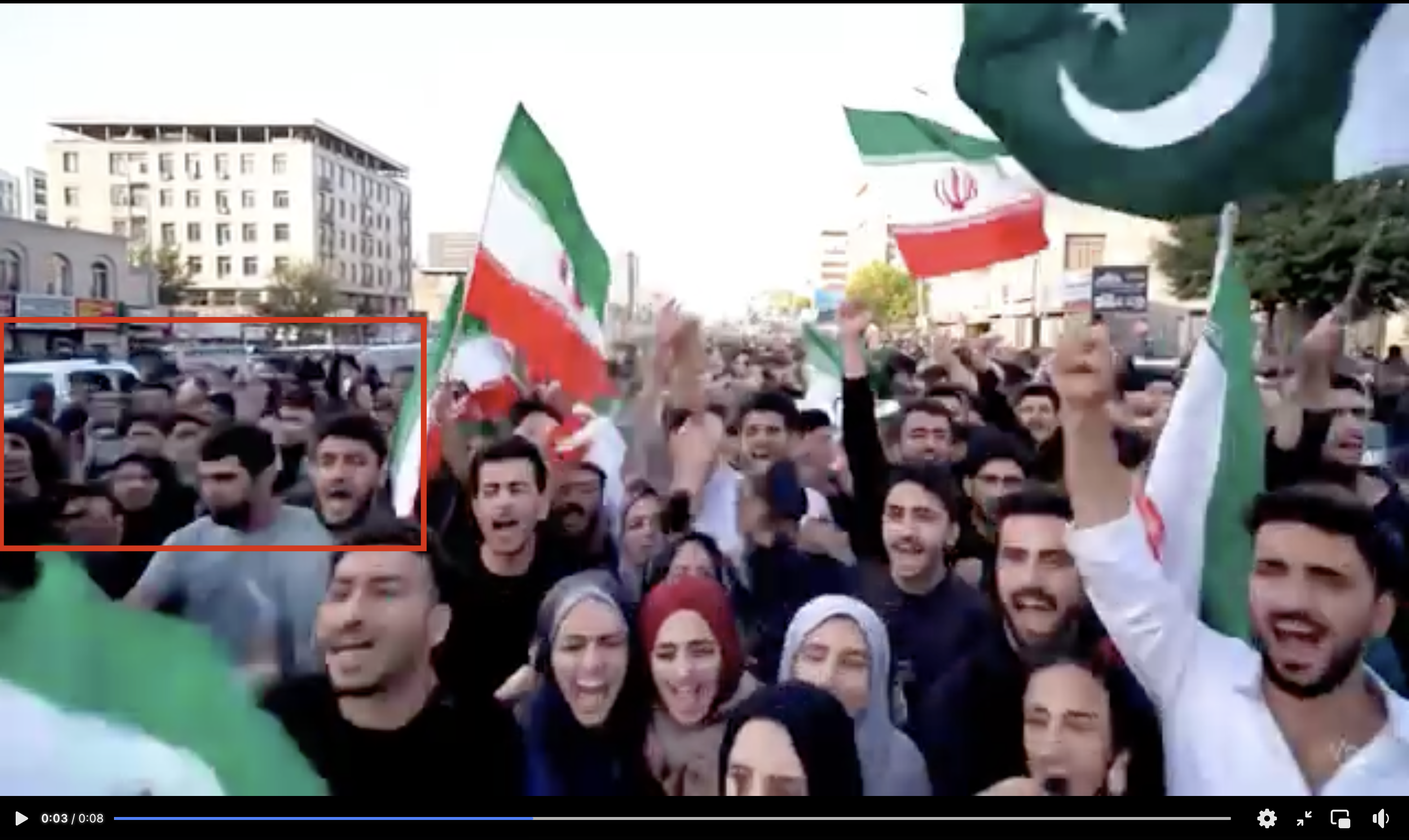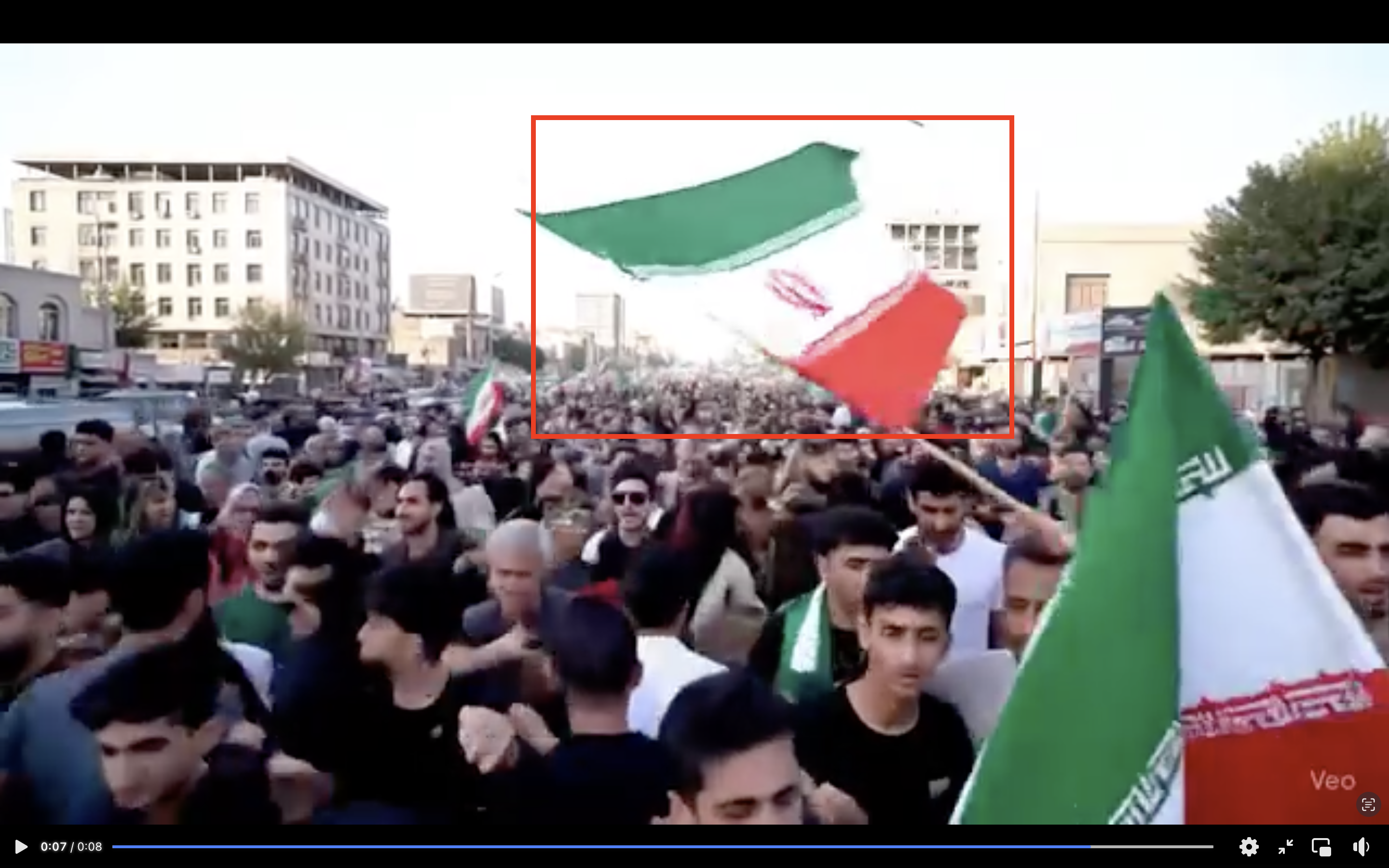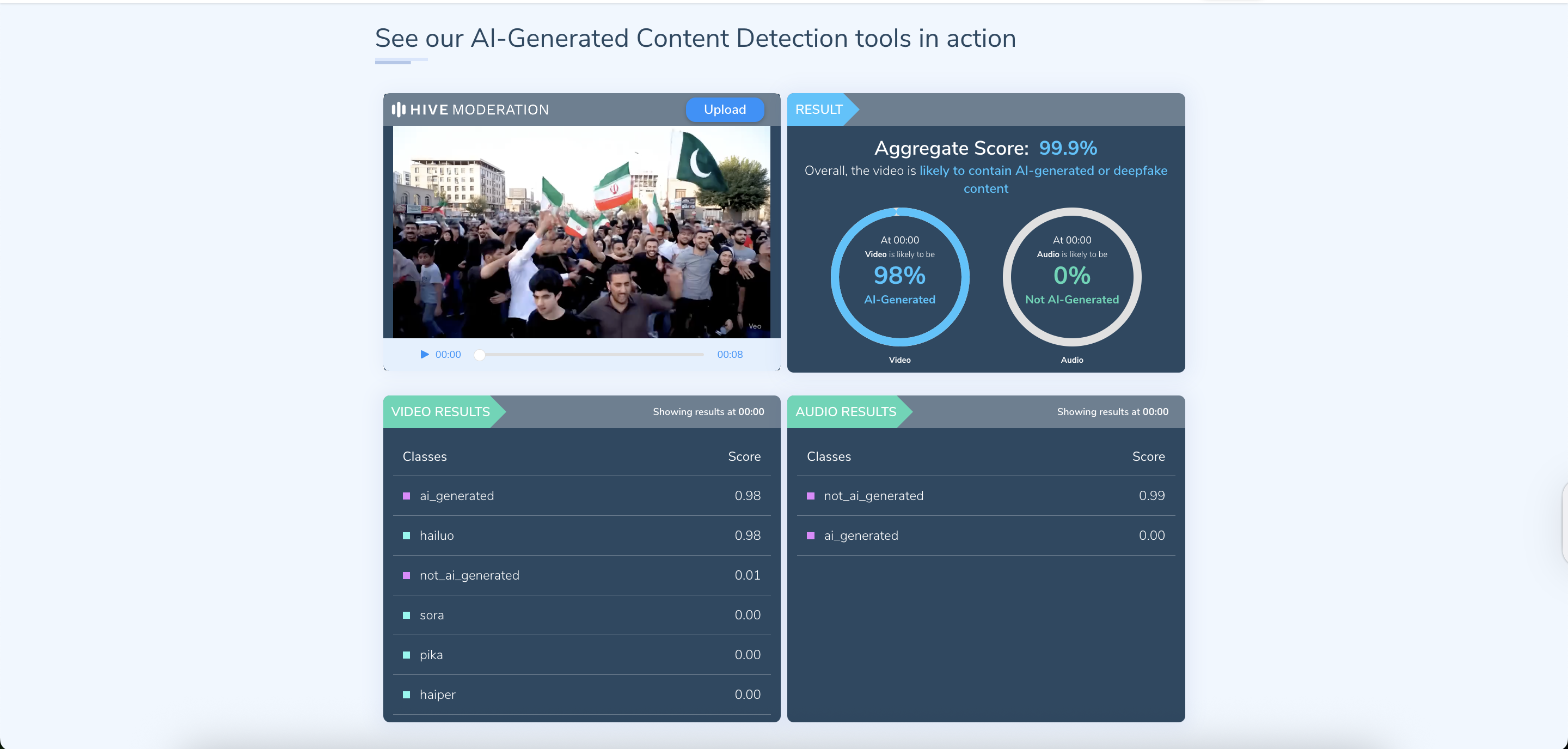
Claim: A video shows Iranians celebrating and thanking Pakistan for their victory over Israel.
Fact: The video is likely AI-generated.
A Facebook user posted a video (archive) apparently showing a crowd waving Iranian and Pakistani flags and expressing gratitude. “Thanking Pakistan for Iran’s victory”, reads the caption of the video when translated from Urdu.
Posts here (archive) and here (archive), which shared the same footage, also claimed that Iranians thanked Pakistan for its victory, most likely referring to the recent Israel-Iran war, and implied that Pakistan helped Iran in a significant manner.
On Thursday, Iran’s Supreme Leader Ayatollah Ali Khamenei claimed victory over Israel, following the announcement of a ceasefire that ended the “12-day War” between the two countries.
Israel-Iran war
Early in the morning on 13 June, Israel launched airstrikes on Iran, targeting its nuclear sites and military bases. The attacks also struck residential areas.
The missiles targeted the Natanz nuclear site, Iran’s main nuclear enrichment facility, and struck the Isfahan Nuclear Technology Center, damaging four buildings. The offensive killed six Iranian nuclear scientists, including Fereydoon Abbasi-Davani, former head of the Atomic Energy Organization of Iran, and Mohammad Mehdi Tehranchi, president of the Islamic Azad University in Tehran.
Israel’s attacks also killed top Iranian military officials, including General Mohammad Bagheri, the chief of staff of Iran’s armed forces, and Major General Hossein Salami, the commander-in-chief of Iran’s Islamic Revolutionary Guard Corps (IRGC). Gholamali Rashid, the head of the IRGC’s Khatam-al Anbiya Central Headquarters, and IRGC Aerospace Force Commander Amir Ali Hajizadeh were also killed in the attack.
Soon after, Iran’s supreme leader, Ayatollah Ali Khamenei, named replacements for the two top Iranian commanders killed in the attack, the AP reported.
Some 200 Israeli jets were involved in the attacks targeting 100 sites in Iran, The Guardian reported. Israel’s attacks have killed at least 610 Iranians and injured another 4,746, according to Al Jazeera’s 24 June report, which cited the Iranian Ministry of Health.
In response, Iran launched drones towards Israel, some of which were reportedly intercepted by Jordan and also spotted in Iraq’s airspace. According to an Israeli military official, the country’s air defences had “shot down many of the over 100 drones launched by Iran.” The retaliatory attacks have killed at least 29 people and wounded another 900.
It is necessary to note that official sources in Iran and Israel have not been regularly publishing death tolls during this time. Soch Fact Check has not independently verified the number of casualties reported by the Iranian and Israeli states.
The Israeli offensive occurred ahead of the nuclear talks which were scheduled to take place between the US and Iran on 15 June in Muscat, Oman. However, on 14 June, officials confirmed that the discussions between the two countries had been cancelled.
US strikes Iran
While the US initially distanced itself from this attack, calling Israel’s actions “unilateral”, US President Donald Trump later called the attack “excellent”. He asserted that more were to come unless Iran agrees to a deal with the US on its nuclear program. On 16 June, Trump warned Iranian citizens to “immediately evacuate” Tehran, and called for Iran’s “unconditional surrender” the following day. Trump said the US knew where Iran’s supreme leader was hiding, but did not want him killed “for now.”
On 18 June, Khamenei rejected Trump’s call for surrender, deemed it a threat, and warned that any US “strikes on its territory” would have “serious irreparable consequences.”
On 21 June, the US joined the conflict by attacking three nuclear sites in Iran. The US pilots dropped 30,000-pound bunker buster bombs, supported by the Tomahawk missiles, targeting nuclear sites in Fordo, Isfahan, and Natanz.
International responses largely reflected dismay and urged restraint. “I am gravely alarmed by the use of force by the United States against Iran today,” said the UN Secretary-General António Guterres, and described the US attack as a “dangerous escalation.”
China, Russia, and Oman condemned the US attacks on Iran, while Japan and Italy called for de-escalation, and other countries urged restraint.
Iran responded by launching missiles at the Al Udeid Air Base in Qatar on 23 June.
Soon after, the US President Donald Trump announced a ceasefire between Iran and Israel. However, hours later, reports emerged that Israel and Iran continued to exchange attacks. Trump censured both countries for violating the agreement, “but reserved his harshest condemnation for Israel”. While addressing the media, the US President added that “Israel, as soon as we made the deal, they came out and they dropped a load of bombs, the likes of which I’ve never seen before.”
Fact or Fiction?
Soch Fact Check conducted a reverse image search using keyframes from the video but found no conclusive evidence about the origin of the footage, raising suspicions that it may be artificial. There were also tell-tale signs that suggested it was fake.
First, just by observing the faces of the people in the crowd, it seems clear AI was used to create the video. Most individuals appear to have their eyes closed or look like they have hollow sockets. AI typically struggles to create pupils and eyes that look realistic, as noted by Kellogg Insight by Northwestern University in a report, “In AI-generated images… eyes may be overly shiny, blurry, or hollow-looking.”
Slowing down the video frames also showed that the faces or the pixels in different areas of the face become distorted. Notably, on the left (as shown in the screenshot from the video), the faces appear deformed and lacking any visible human features. This glitch in the footage, which creates “smudgy-looking patches,” is another well-documented sign that reflects AI’s failure to produce realistic, human-like features properly.

Screen grab from the video.
At 0:05, people in the background start to morph into each other, as if disappearing through an invisible doorway, another indication of AI, as it is unable to recreate footage that resembles real life.
Moreover, at 0:07, an Iranian flag transforms into a Pakistani flag after it’s waved, strongly reflecting that AI was used.

Screen grab from the video.
Soch Fact Check also analysed the video using the AI detection tool Hive Moderation, which uses machine learning models to identify content generated by artificial intelligence. The results for this footage stated that there was a “99.9%” likelihood that the video contained “AI-generated or deepfake content.”

Results from Hive Moderation, an AI detection tool.
Therefore, the video purportedly showing Iranians thanking Pakistan for its victory is fake and likely AI-generated.
Virality
The Facebook video racked up 977,000 views and received 53,000 likes.
The video also appeared on Facebook here, here, here, here, here, here, and here.
On YouTube, the video can be found here, here.
On X, the AI-generated video appeared here, here, here, here, and here.
Conclusion: The video, which claims to show an Iranian crowd thanking Pakistan, is not authentic. It was likely created using AI-generation software.
Background image in cover photo: Tehran Times
To appeal against our fact-check, please send an email to appeals@sochfactcheck.com
